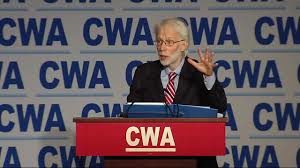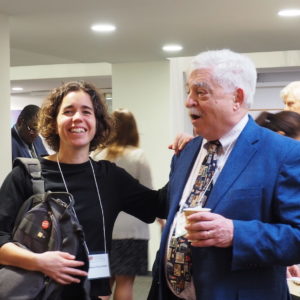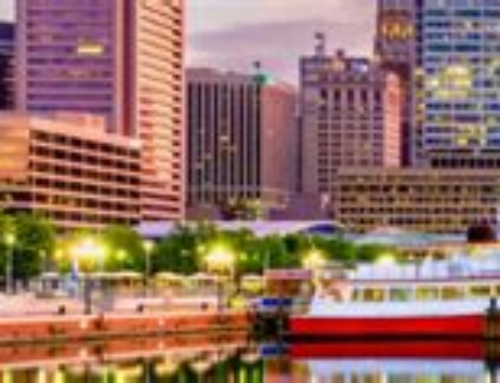Round number birthdays are always a good time to reflect on the past and ponder the future. Given who I am, that means thinking about the political times we are in, how we got there, and what we could do about it. For just about everyone I know and wherever we live, these are not good times.
So, it made sense for me to think about the political past, present, and future in the week when I simultaneously turned 70, launched www.charleshauss.info, and agreed to do a core peacebuilding textbook. In these and the other projects I’m working on, my goal is to encourage as many people as I can to work together to produce the profound social, political, economic, environmental, and other problems we face.
So, treat this blog post as an invitation, one that will take me a while to spell out.
Although I was already planning to launch this website and blog, a pair of conversations I had during the fall with my friend and Oberlin classmate Les Leopold threw me for a loop and then helped me see what the web site and everything else I do in whatever time I have left should be focused on.
The first conversation took place while we were planning the political side of our upcoming 50th college reunion (yes, Oberlin reunions are weird). We met a few weeks later at a conference there on the state of American democracy, at which point I realized that I should use the rest of my active life to help catalyze and amplify efforts for a non-violently induced social and political paradigm shift.
There’s nothing new to that. While an undergraduate at Oberlin in the 1960s, I was an activist who did many things, including, as this picture shows, blocking a  military recruiter’s car and preventing it from reaching campus (no, I’m not in this picture; I was negotiating with college officials when it was taken). Even then, I was fascinated by the idea of paradigm shifts which my professors had me reading about. After that, I moved on and became a fairly conventional academic, albeit one with a deep interest in non-violent political and social change. While at Colby where this picture was taken, I returned to life as an activist through the Beyond War movement and then later, after moving to Washington, at Search for Common Ground and, now, the Alliance for Peacebuilding where I am its Senior Fellow for Innovation and an emeritus member of its board of directors.
military recruiter’s car and preventing it from reaching campus (no, I’m not in this picture; I was negotiating with college officials when it was taken). Even then, I was fascinated by the idea of paradigm shifts which my professors had me reading about. After that, I moved on and became a fairly conventional academic, albeit one with a deep interest in non-violent political and social change. While at Colby where this picture was taken, I returned to life as an activist through the Beyond War movement and then later, after moving to Washington, at Search for Common Ground and, now, the Alliance for Peacebuilding where I am its Senior Fellow for Innovation and an emeritus member of its board of directors.
Needless to say, the two trips to Oberlin and the discussions with Les led me to rethink our activist days and, more importantly, consider a challenge I didn’t particularly want to face. Frankly, if you had said to us when we graduated that the right would win and we would lose, that there would be a Marine Le Pen or a Donald Trump near or in power, or that the left would be in the trouble it is today, we would have laughed in your face. Yet, that’s where we are today.
At the same time, we have made remarkable strides, and some of the goals we only dreamed of fifty years ago are squarely on the global political agenda today. In my own work, the best example of this so far are the UN’s seventeen integrated Sustainable Development Goals.
What we don’t yet have is a strategy that could help us both get out of the mess we’re in today and have a fighting chance of reaching these or any other constructive goals.
I’m lucky to have been involved in some promising initiatives. Some of them take on the toughest problems at a high level, including the conference on American democracy at Oberlin which will be the first of at least five on the topic to be held around the country in the next eighteen months. Some of them are at the grass roots and only deal with individual issues at the local level as Gretchen and I discovered when we spent time with a community mediation center in Warrenton, Virginia.
To begin with, it certainly includes saying “no” to the things we disagree strongly about. We did that well in the days when our hair still had its natural color (and more length). We are doing so again today not only with the massive marchers we attended since the inauguration but also in the burgeoning grass roots initiatives like Repairers of the Breach that plans to become the next incarnation of the civil rights movement of the 1960s under the leadership of Rev. William Barber and others.
 Even more importantly, it requires defining policy solutions that make sense in the world of 2017 that is so different from the realities of 1967 when we surrounded that recruiter’s car. That, in turn, means forging new political ideas, From my perspective, that involves thinking of the world as facing a set of wicked problems whose causes and consequences are so inextricably intertwined that you can’t solve them quickly, easily or separately—if you can solve them at all.
Even more importantly, it requires defining policy solutions that make sense in the world of 2017 that is so different from the realities of 1967 when we surrounded that recruiter’s car. That, in turn, means forging new political ideas, From my perspective, that involves thinking of the world as facing a set of wicked problems whose causes and consequences are so inextricably intertwined that you can’t solve them quickly, easily or separately—if you can solve them at all.
Here, too, we can identify terrific initiatives that are already underway. That’s what the UN was getting at when it adopted the SDGs. That’s what Les has in mind when he talks about stopping runaway inequality. That’s what my colleagues in the peacebuilding field mean when we try to help people deal with intractable conflict in faraway places like Burundi but now realize that we have to do the same in Baltimore. It’s also what my colleagues at AfP are doing in our project on rewiring the brain that seeks to combine insights from neuroscience, spirituality, and peacebuilding.
I know I’ve only scratched the surface. There is a lot going on out there, but a lot of it consists of individual projects whose combined potential to produce change has not yet been touched.
I’ve created my web site, its blog, and everything else I do at AfP and elsewhere to identify those initiatives, find ways of helping their participants work better together, and produce the kind of change Les and I and all of our friends hoped for on that cold October day in 1967 and still hold dear to our hearts today.
None of us can do it alone.
Therein lies the invitation
As I see it, that will also involve forging new political coalitions that span the ideological divisions and filter bubbles and the like that are so often in the news today. In my own work, that has led me to reach out to friends in the military, the Evangelical churches, and beyond. For Les, that has included running workshops on inequality with union members, many of whom voted for President Trump.
In short, how do we build what my graduate school professor and, now, friend, Robert Putnam, calls bridging social capital.
I’ll be the first to admit that I don’t know the answers. I don’t know where the right mix is between “no” to intolerance and bigotry and “yes” to a vision of a world that works for everyone lies.
But as I enter my eighth decade, the time has come to redouble my efforts to work with everyone I can to figure “it” out.
I’m lucky, I get to work with young people like Helena Puig Larrauri
whose Build Peace conference on technology, peacebuilding, and more I’m going to as soon as I finish typing this blog post. I’m also lucky to have done well enough financially that I can devote myself full-time to this work.
Many others are not so lucky.
But, fifty years of working for non-violent paradigm shifts has convinced me that there is something we all can do.
So, after 70+ years, if I’ve learned anything, it’s how to issue invitations and bring people with different backgrounds, interests, and political viewpoints together. So, come join my colleagues and me either through my web site or in any other way that makes sense for you.
Depending on which platform you are reading this on, you can let me know what you think by using the comment form below. Or, just shoot me an email at chip@charleshauss.info.
The views and opinions expressed in this article are those of the author and do not necessarily reflect the official policy or position of the Alliance for Peacebuilding or its members.
Also published on Medium.






